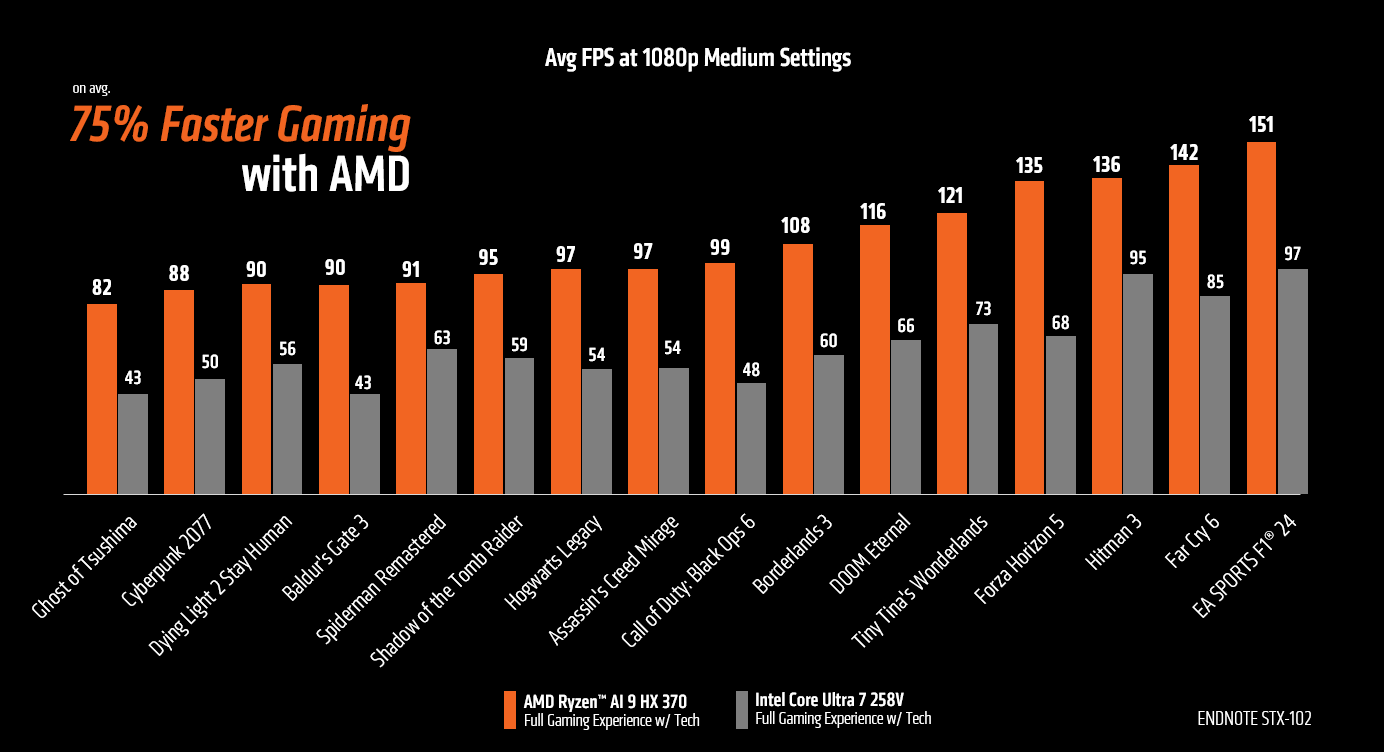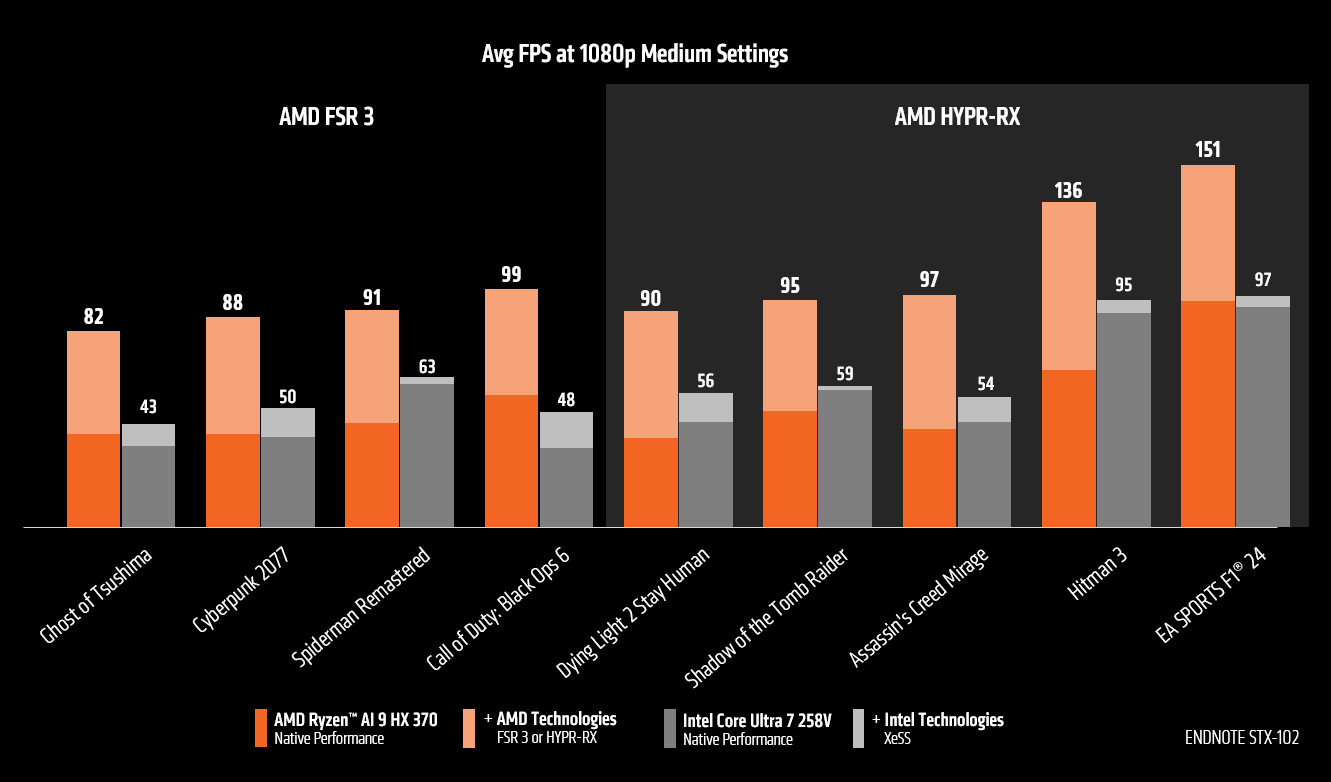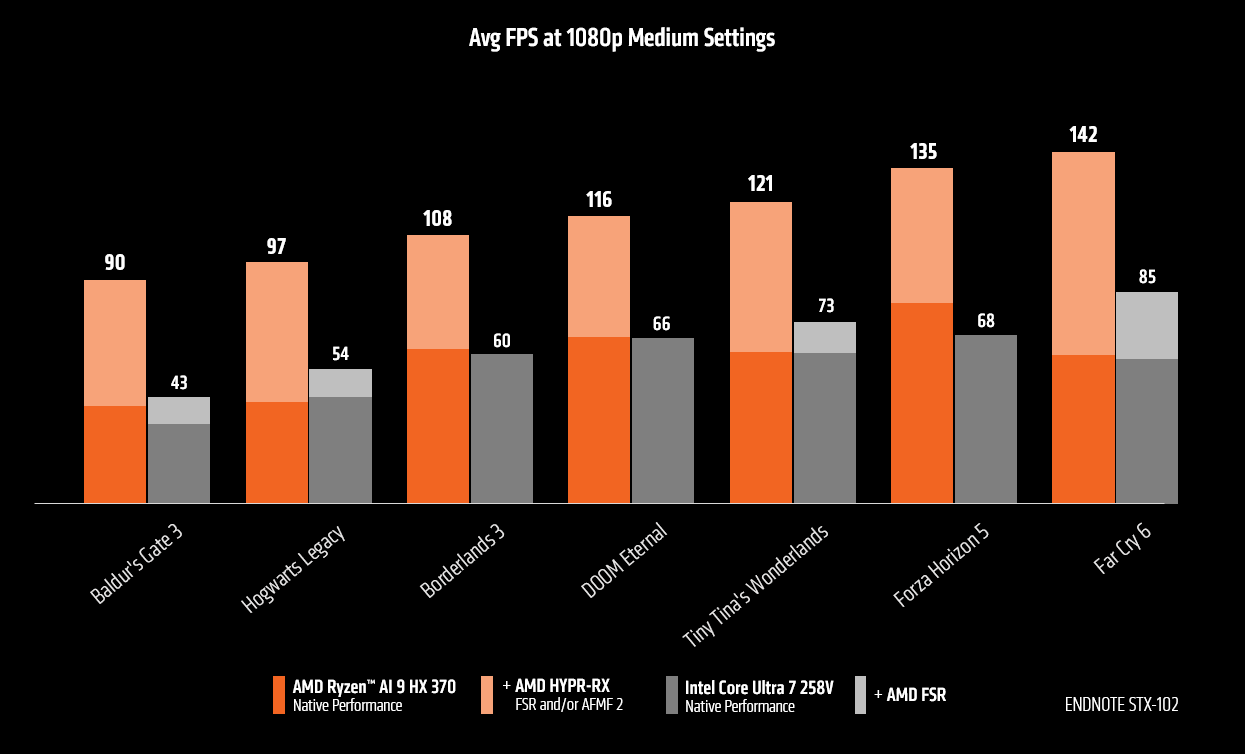What simply occurred? AMD is making daring claims relating to the gaming efficiency capabilities of its new Ryzen AI 300 sequence cell processors. The chip large lately dropped a weblog submit exhibiting off some spectacular efficiency numbers, boasting that its flagship Ryzen AI 9 HX 370 CPU with built-in Radeon 890M graphics is on common 75% quicker than Intel’s rival Core Extremely 7 258V packing Arc 140V graphics.
To again these claims, AMD rolled out benchmark outcomes for over 15 well-liked recreation titles run at 1080p medium settings. The titles examined embody Cyberpunk 2077, Murderer’s Creed Mirage, Name of Obligation: Black Ops 6, and Hogwarts Legacy. Throughout the board, AMD’s Ryzen AI chip constantly outgunned the competing Intel processor.
Within the newest Name of Obligation installment, the HX 370 averaged a clean 99 fps in comparison with simply 48 fps on the 258V – a staggering 51 fps lead for Workforce Pink. Comparable domination was noticed in racing titles like Forza Horizon 5 and F1 24, with with efficiency leads exceeding 50 fps.
Nonetheless, there is a catch: AMD is leveraging the complete breadth of its upscaling and body technology tech like FSR 3, HYPR-RX, and AFMF 2 to attain these outcomes. Collectively, these software program methods apply applied sciences reminiscent of clever upscaling, anti-lag, and motion-focused dynamic decision scaling to considerably increase efficiency.
On Intel’s aspect, the benchmarks make the most of XeSS the place accessible and FSR for titles with out XeSS help. Nonetheless, XeSS at the moment lacks body technology capabilities, placing it at an inherent drawback.
That stated, AMD additionally included native efficiency to provide a extra apples-to-apples comparability. On this uncooked state, the Ryzen AI 9 HX 370 and Core Extremely 7 258V traded blows, with every chip taking a lead in sure titles.
The important thing takeaway is that when working unassisted, the gaming capabilities of those newest AMD and Intel cell chips are far more evenly matched than AMD’s 75% lead implies.
There isn’t any doubt that the way forward for cell gaming lies in performance-boosting applied sciences like upscaling, body technology, and dynamic decision scaling. Collectively, these applied sciences are poised to change into more and more vital instruments for high-fidelity gaming on low-power {hardware}. They already are must-haves for ray-traced 4K PC gaming.
On that entrance, AMD seems to have a decisive lead over Intel. FidelityFX Tremendous Decision and body technology are supported in a whole lot of video games, whereas Intel’s XeSS continues to be rolling out with simply over 130 titles supported to date.






